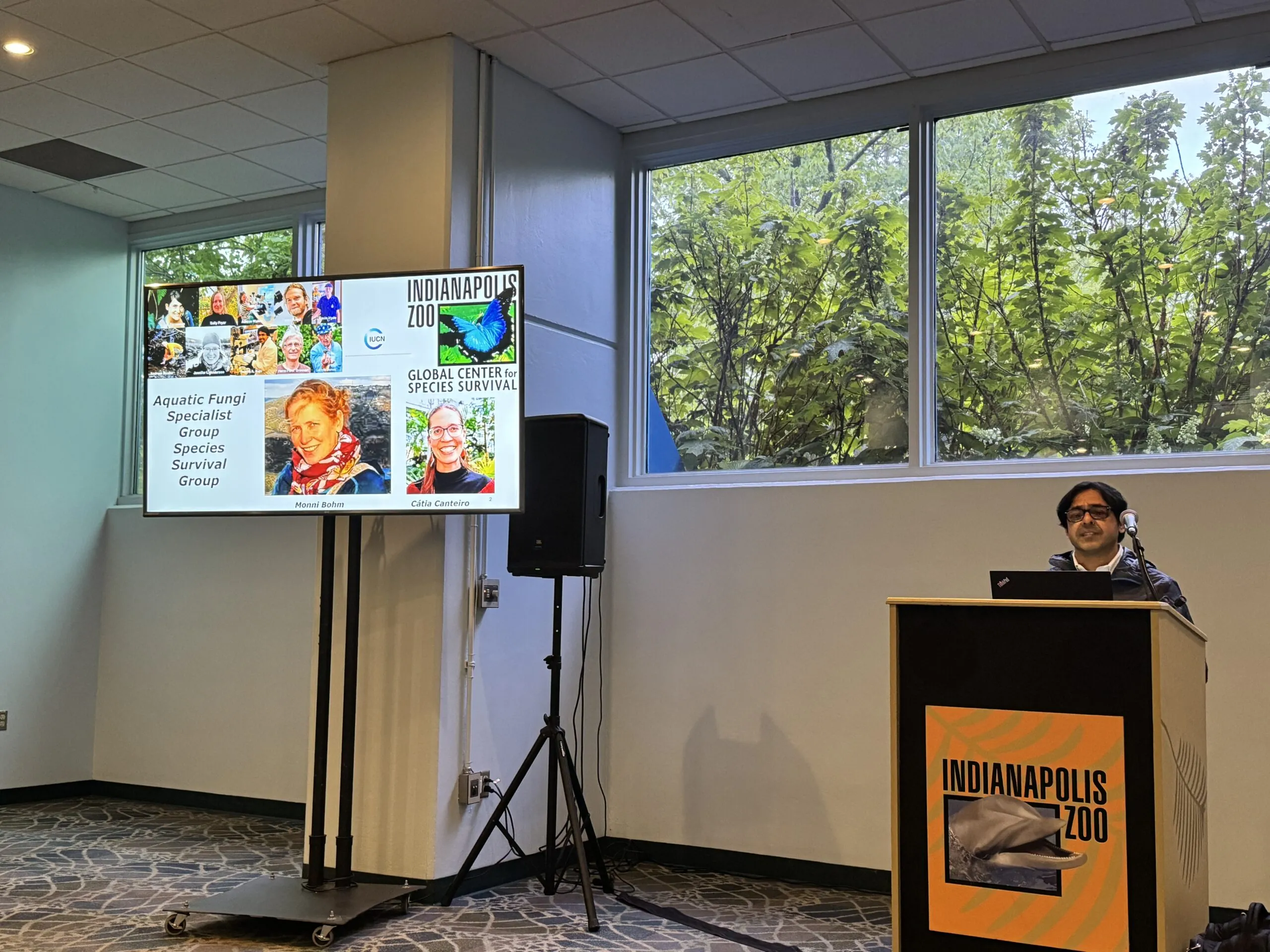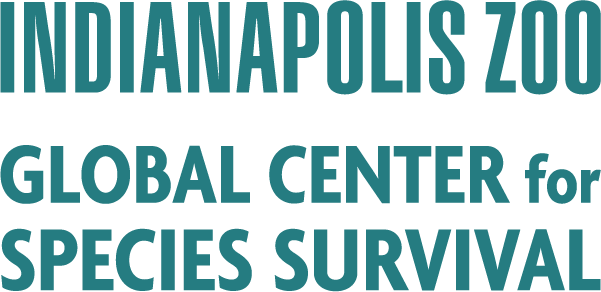
Freshwater Fungi
What can you see if you look at the White River here on Indianapolis Zoo’s doorstep? Water, birds, turtles, the odd jumping fish, probably a logjam… and if you look more closely, many, many submerged sticks in the water. But why focus on sticks? When we look at water, we generally want to see fish darting about, insect larvae stalking prey, crayfish scuttling about, mussels filtering the water, or other cool (and visible) organisms going about their daily lives. Well, when you see a submerged stick, there may be some invisible organisms going about their daily lives as well, out of sight and out of mind!
Freshwater fungi are an indispensable part of freshwater ecosystems. They may be microscopic in size, but they pack a punch when it comes to ecological function, providing the ecological basis for other organisms to thrive. They break down complex plant material (including – you guessed it – sticks!) into more digestible components that can then be used as a food source by other aquatic critters such as those mentioned above. In short, freshwater fungi support aquatic food webs and help keep freshwater ecosystems healthy!
Despite their importance to freshwater systems, we know very little about freshwater fungi. The Global Center for Species Survival first became involved with this intriguing group of species in 2021 while working with our partners (IUCN Species Survival Commission’s (SSC) Freshwater Conservation Committee, IUCN SSC Specialist Groups with an aquatic focus, and SHOAL) on a report about Fantastic Freshwater – highlighting 50 species of conservation concern. We quickly realized that we would not be doing freshwater a service if we did not also include freshwater fungi in this report – and the rest is history.
Since then, there has been a flurry of activity to increase conservation focus for aquatic fungi (yes, there are fungi in marine systems too!). This includes an exciting project of aquatic fungi discovery right here on our doorstep. Led by a member of the newly established IUCN SSC Aquatic Fungi Specialist Group, Dr. Huzefa Raja from the University of North Carolina Greensboro, we set off on a freshwater fungi safari in Indianapolis and beyond!
Check out these photos from visits to the White River at Indy Zoo, Belmont Beach, Riverside Park, Newfields, and as far afield as Muncie! At each site, we were looking for submerged sticks, which then underwent the “break” test – snapping the stick to see if it sounded like the stick had been in water long enough to allow fungi to settle and start their important work of breaking down the material. Any sticks collected were then placed in Ziploc bags lined with kitchen towels and the location data was jotted down into a notebook.
So now what? Huzefa has taken our haul of White River sticks to his lab to incubate them to promote reproduction. From these cultures, identification will then occur under the microscope.
While visiting Indy, Huzefa also took some time to talk to Indianapolis Zoo staff and invited guests representing state agencies, academic institutions and freshwater-focused organizations in and around Indy about his work. In addition to visiting the White River Education & Research Center in Muncie, Huzefa and his colleague Dr. Nick Oberlies also visited the Indiana School for the Blind and Visually Impaired to engage students in collecting freshwater fungi sampled on the school’s campus.
We can’t wait to learn what Huzefa and Nick found on this first visit to Indianapolis, and what their next visit will hold later this year – watch this space for updates on this project!

During his visit to Indiana, Huzefa traveled to the freshwater mussel propagation facility in Muncie (find out more about this exciting project in an upcoming blog post) and met with Dr. Luke Jacobus who is studying mayflies of Indiana (he’s featured in a Protect Species Podcast episode). The mussel facility and mayfly research are also recipients of Indianapolis Zoo grants.
We hope that through these connections, we can sample additional parts of the state for freshwater fungi and share Huzefa’s findings on what’s in the water with these projects.
This blog was a collaboration between experts at the Global Center for Species Survival, including Freshwater Conservation Coordinator Dr. Monni Böhm and Global Center intern Michael Hannon.
Published August 16, 2024

